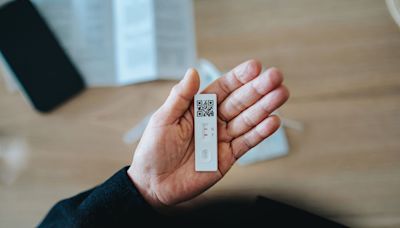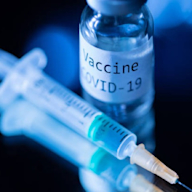Search results
Mar 1, 2024 · They include fatigue, sore throat, congestion, runny nose, headache, body aches and cough. “All or any of those in isolation can still be Covid,” Dr. Gandhi said. Some people may develop ...
- Overview
- Symptoms
- Causes
- Risk Factors
- Complications
- Prevention
COVID-19, also called coronavirus disease 2019, is an illness caused by a virus. The virus is called severe acute respiratory syndrome coronavirus 2, or more commonly, SARS-CoV-2. It started spreading at the end of 2019 and became a pandemic disease in 2020. The virus that causes COVID-19 spreads most commonly through the air in tiny droplets of fl...
Typical COVID-19symptoms often show up 2 to 14 days after contact with the virus. Symptoms can include: 1. Dry cough. 2. Shortness of breath. 3. Loss of taste or smell. 4. Extreme tiredness, called fatigue. 5. Digestive symptoms such as upset stomach, vomiting or loose stools, called diarrhea. 6. Pain, such as headaches and body or muscle aches. 7....
COVID-19is caused by infection with the severe acute respiratory syndrome coronavirus 2, also called SARS-CoV-2. The coronavirus spreads mainly from person to person, even from someone who is infected but has no symptoms. When people with COVID-19 cough, sneeze, breathe, sing or talk, their breath may be infected with the COVID-19virus. The coronav...
The main risk factors for COVID-19are: 1. If someone you live with has COVID-19. 2. If you spend time in places with poor air flow and a higher number of people when the virus is spreading. 3. If you spend more than 30 minutes in close contact with someone who has COVID-19. Many factors affect your risk of catching the virus that causes COVID-19. H...
Complications of COVID-19include long-term loss of taste and smell, skin rashes, and sores. The illness can cause trouble breathing or pneumonia. Medical issues a person already manages may get worse. Complications of severe COVID-19illness can include: 1. Acute respiratory distress syndrome, when the body's organs do not get enough oxygen. 2. Shoc...
The Centers for Disease Control and Prevention (CDC) recommends a COVID-19 vaccine for everyone age 6 months and older. The COVID-19 vaccine can lower the risk of death or serious illness caused by COVID-19. It lowers your risk and lowers the risk that you may spread it to people around you. The COVID-19vaccines available in the United States are: ...
Apr 28, 2023 · The coronavirus SARS-CoV-2 causes COVID-19. A person with COVID-10 may experience a dry cough, loss of taste or smell, and fever. People should seek help if they have difficulty breathing. This ...
- Beth Sissons
Apr 4, 2024 · Early symptoms: Week 1. COVID-19 symptoms typically occur 2–14 days after exposure to the virus, most commonly after 5–6 days. Most people will experience mild-to-moderate symptoms during this ...
- Aaron Kandola
Dec 15, 2023 · In December, JN.1 caused a growing percentage of COVID-19 cases, an also seemed to lead to an increase in total cases, Pekosz told TODAY.com at the time. Test positivity, an early indicator of ...
- Caroline Kee
Nov 10, 2023 · HV.1 is a sublineage of omicron XBB.1.9.2 and a direct descendent of EG.5, according to the CDC's SARS-CoV-2 lineage tree. “The COVID family of viruses likes to mutate. We’ve all learned that ...













